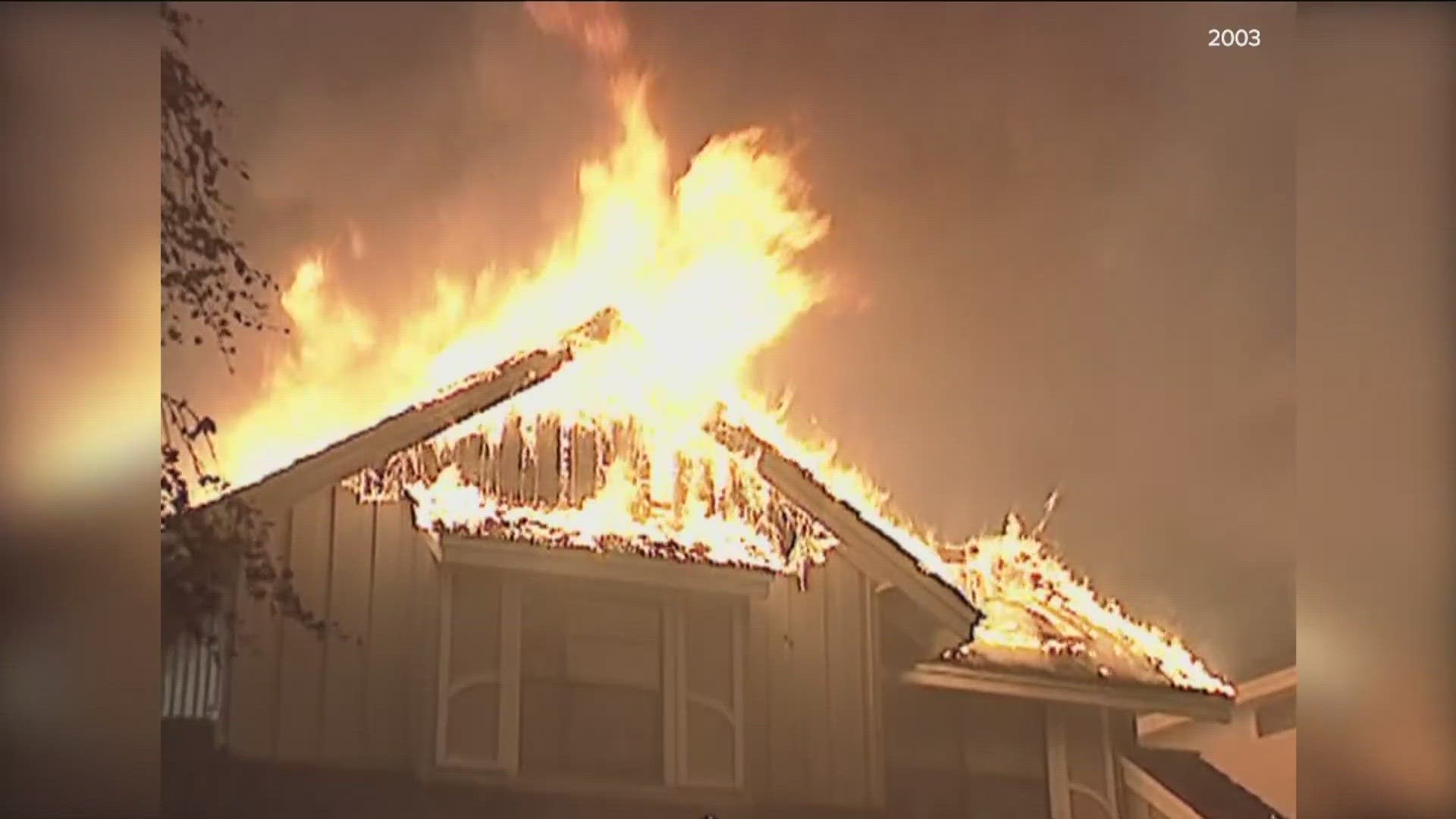SAN DIEGO — It's been 20 years since the Cedar Fire, so CBS 8 is looking back at lessons learned from the devastating fire and how firefighting has evolved since then.
“We’d had big fires before, but nothing like the Cedar Fire with how quickly it expanded and got into populated areas," said Fire Chief Tony Mecham for Cal Fire in San Diego County as he recalled what it was like. “I think just how overwhelmed we felt that day, waking up that morning and just realizing we had a beast on our hands.”
For what was, at the time, the largest wildfire in California history, burning 273,000 acres and more than 2,200 homes, there were important takeaways for those dedicated to protecting San Diego County from the next big one.
“That fire is going to happen again, right, where the winds blow and the fuel conditions dry out," said Mecham. "So what can we do to, not stop the fire, but lessen the impacts?”
The county's capability for attacking fire from the air has grown immensely over the years, with at least 13 copters in the county capable of water drops.
“Just the adrenaline and the excitement of seeing the flames and the smoke, there’s nothing that replaces it,” said pilot William Liniewicz with the Sheriff’s Department, which has 3 helicopters in their arsenal. “The satisfaction that comes with seeing the big flame ahead of you and getting to put the water on it and seeing it out is gratifying.”
One huge advancement since the Cedar Fire is the ability to fight fires from the air at night. In 2003, fire officials followed safety rules that prohibited aircraft from battling wildfires in the dark, which allowed the Cedar Fire to spread rapidly overnight.
Now, San Diego Fire-Rescue has 2 twin-engine helicopters capable of night missions, and Cal Fire can call on their night-flying copter from the Hemet Ryan Air Attack Base in Riverside.
“The night vision goggles and the instruments, all of those things, the technology has gone up that allows us to do those flight operations at a lower elevation where maybe there were concerns before,” said Mecham.
The County formed its own regional fire department in 2008 to extend around-the-clock protection to rural areas of the County, including the latest fire station to open in East Otay Mesa.
Since 2003, regional collaboration between agencies has improved greatly.
“We all train together, we work together, we operate, and we’ve kind of said it doesn’t really matter the color of the fire engine or the patch, we’re going to respond as the San Diego Fire Service,” said Mecham.
Another tool that’s making a huge difference in getting ahead of the firefight is the vast camera network monitored by Cal Fire.
“Our dispatchers, as soon as we get a 911 call, we’re looking at the cameras and when we see a fire that looks to be developing, we’re automatically sending additional equipment before the first fire engine even gets there,” said Mecham.
With all the tools and assets and advancements since the Cedar Fire, CBS 8 asked Mecham what he thinks our vulnerabilities still are and what keeps him up at night.
“There’s still people today that live in wildland areas that don’t do the clearance around their homes, that don’t have a plan for when we ask you to evacuate or that won’t evacuate,” said Mecham. “I think that’s what troubles me is that we can rebuild homes, the trees and brush are going to grow back but we can’t replace human life."
WATCH RELATED: Longtime CBS 8 anchor Barbara-Lee Edwards reflects on Cedar Fire 20 years later

